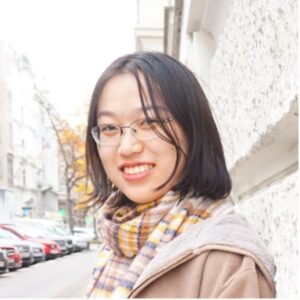“Forget it, Jake. It’s Chinatown.” – Chinatown (1974)
The dialogue in the film Chinatown (1974) means “you cannot change things, it’s the way things are and the way they will be, regardless of how much you tilt at windmills.” It indicates how spontaneous and ungovernable a Chinatown could be, thus giving people imagination of a mysterious and exotic place.
Chinatown as a symbolic ethnic enclave has been established over the world. London, New York, Los Angeles, Sydney… Metropolises need one Chinatown to claim their international identity, so as Amsterdam and The Hague. However, not all Chinatowns are the same. Regarding different historical backgrounds and urban contexts, Chinatowns grow their own Chineseness.
This is a guest article written by Yuyao Mei, who wrote her Master’s thesis at the University of Utrecht about Chinatowns’ Chineseness. Read more about her at the bottom of this article!
Languages of commercial signs: Cantonese versus Mandarin
Amsterdam’s Chinatown is the oldest Chinatown in mainland Europe. Similar to most Chinatowns in the world, it was established by sailors who were mainly from coastal provinces of China, represented by Cantonese and people from Zhejiang Province in 1911. After fierce competition, people from Zhejiang moved to the periphery while Cantonese stayed (Pieke, 1988). Nowadays you could easily find authentic Cantonese restaurants and supermarkets there.
If you read the Chinese characters of these shops in Chinatown Amsterdam, you might realize that traditional Chinese is more frequently seen than simplified ones, indicating that they were set by people from Hong Kong or mainland before the 1960s; if you read the letters of the bilingual signs, you might realize the translation is based on Cantonese pronunciation instead of Mandarin one (Pinyin). For non-Cantonese-speaking Chinese, Cantonese does not sound like Mandarin at all. Although some Cantonese entrepreneurs use Mandarin as their working language, Amsterdam’s Chinatown does not always provide a sense of belonging.
However, The Hague’s Chinatown does. Applying the same criteria to The Hague’s Chinatown, you will realize the number of simplified Chinese or Pinyin is significantly more than Amsterdam’s Chinatown. One reason is that The Hague’s Chinatown (officially acknowledged in the 2000s) is younger than Amsterdam’s, so the immigrant groups are more diverse (Willems, & Or, 2010). Many shops are owned by people from the Northeast region of China, where people’s dialect is almost the same as Mandarin. In The Hague’s Chinatown, groups share the market of catering industries, as well as service industries such as massage shops, hair studios, and nail salons. Mismatches between origins and shop themes are usual, like Zhejiangers running a Sichuan restaurant at Gedempte Burgwal.
Belief through symbolism: Buddhism versus Confucianism and Taoism




In The Hague’s Chinatown stands one church and one mosque, but this does not mean no Chinese believes are there. On the ground, you could find slogans in Chinese and Dutch that illustrate Confucian thinking (right) and Taoist principle (Figure. 3). Confucianism has long-term influence in Chinese history and Taoism is the native religion of China. The combination well presents the Chinese philosophy and helps construct a differentiated Chineseness.
Gates without doors: towards an open Chinatown
Look at the two authentic Chinese gates in The Hague. There are no doors. Just as 唐人街 (táng rén jiē) itself literally means, it should be Chinese Streets instead of an enclosed Town. As Chinese communities demonstrate their identities through linguistic signs and symbols, different Chineseness is constructed. Therefore, we conclude that a Cantonese-dominated Chinatown is in Amsterdam and a multicultural Chinatown is in The Hague. But with more and more Mandarin-speaking consumers fluxing in, more open Chinatowns are foreseen.
References
Pieke, F. N. (1988). De positie van de Chinezen in Nederland. Documentatiecentrum voor het Huidige China, Sinologisch Instituut, Rijksuniversiteit Leiden.
Willems, W., Cottaar, A., & Or, K. Y. (2010). Een draak met vele gezichten. Chinatown Den Haag 1920-2010.
About the author


Yuyao studied Urban and Economic Geography at Utrecht University. For her Master’s thesis, she compared two Chinatowns: The Hague and Amsterdam. She is planning to go into the field of linguistics and find out the difference between the Chineseness of Chinatowns.
We thank Yuyao for writing this amazing article for us!

